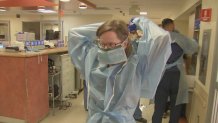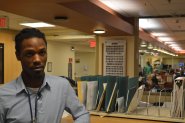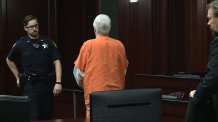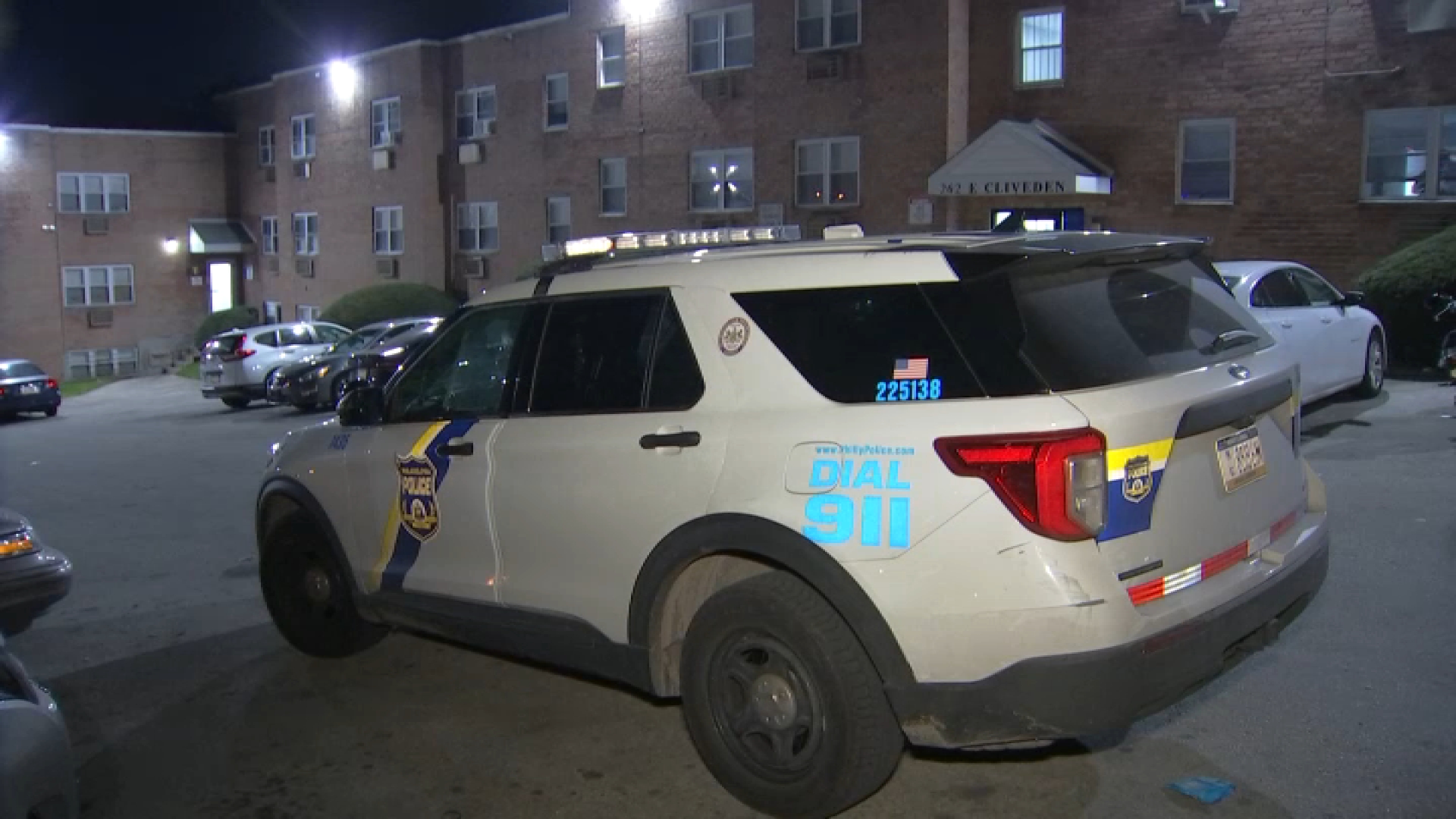A woman's voice blurts out over the loudspeaker with words requiring immediate action.
"Level one trauma has been called. Level one trauma."
Shanna Hobson bolts from her chair, and hurries down a corridor of the emergency room at Hahnemann Hospital in Philadelphia.
"What is it?" the trauma unit nurse asks a colleague as an assembling group of medical personnel prep for an incoming patient. They put on aprons and latex gloves and face masks.

Within five minutes, Hobson and everyone else find out what kind of injury requires the highest level of response. A man with a gunshot wound arrives in the back seat of a police SUV.
Once the man is taken a short distance from the ambulance entrance on Vine Street to the trauma bay of Hahnemann's ER, the real work begins. It's the other side of the sirens that the newspapers and TV broadcasts don't often report on. Yet it's where a patient often lives or dies.
NBC10 spent four nights inside Hahnemann's trauma bay in Center City, watching the dozens of doctors and nurses and social services staffers handle incoming patients during the busy overnight hours.
The bustling environment is more than just a medical response to wounds. It's a place where emotional healing begins almost as immediately as the trauma surgeons treat the serious injuries.

That's where Jermaine McCorey, an intervention peer specialist with a program called Helping Hurt People, comes in. He comforts patients while they're still on the operating table. When those patients are taken upstairs to wait for additional surgery or begin their recuperation, McCorey will be there too.
Local
Breaking news and the stories that matter to your neighborhood.
"Trauma, it cripples you emotionally," McCorey said, standing near the trauma bay on a recent weekend night. "One minute you're standing outside your house, or you're driving, having a normal day. The next thing you know, you're on a table with these lights in your eyes and 10 or 15 people standing over you."
As Dr. Marcin Jankowski sees it, the hospital is more than just a place to stop bleeding and close up wounds. Patients should also get treatment that makes the healing process easier, according to Jankowski, the hospital's director of trauma and surgical critical care.
But that type of healing can only take place if his team of surgeons and nurses do their job first.
That team is big. As many as 10 to 15 nurses and surgeons fill up the trauma bay while working on a patient. He said they each have a specific role.
"Everyone in the room needs to act as one," Jankowski said.

In the case of the young man with the gunshot wound, he survives. But Jankowski's night is far from over. The patient is stabilized, but he'll likely need more surgery. Some of the doctors and nurses take him upstairs to the intensive care unit.
No one recovers quickly from a bullet to the upper body. On this night, a man survived a very serious wound, but he likely faces months of rehabilitation and recovery.

There are no certainties inside trauma units.
"Some days are bad. Some days are good," Jankowski said before heading upstairs. "It's the uncertainty that keeps you motivated and fresh."
From 2014 through 2016, Philadelphia's five hospitals certified to handle the most seriously injured patients treated a combined more than 28,000 traumas. They are Einstein Medical Center, Hahnemann University Hospital, Thomas Jefferson University Hospital, Penn Presbyterian Trauma Center and Temple University Hospital.
That's an average of 25 a day.
Of all the traumas, 3,845 were treated for gunshot wounds.
In addition to programs like Healing Hurt People, Hahnemann also participates in an initiative to train people in workplaces and schools how to use a tourniquet. The growing effort follows years of research that concluded blood loss is most crucial to saving a trauma patient's life.
It's why Philadelphia police officers and cops in other departments across the country are authorized to "scoop-and-run" — transporting gunshot victims to hospitals in police vehicles instead of waiting for an ambulance.
The idea of stopping blood loss first when treating trauma patients actually has its roots in Philadelphia, NBC10.com reported in October.
In 1993 at HUP, trauma surgeon Michael Rotondo co-authored a study on the changing approach to treating gunshot wounds and coined a phrase that reached trauma bays around the world, "damage control surgery."

Jankowski believes hospitals should be pro-active when dealing with trauma. They can help prevent it as well as treat it, and everyone, not just doctors and nurses, can save lives if properly trained.
Not everyone, however, could work overnights in a Philadelphia trauma unit. Hobson said it's difficult to adapt to the life-and-death stakes.
"Especially if they're awake and moaning and maybe they're a little scared, it can be a little traumatic, you know, because a lot of times it can be someone on the brink of life or death," she said. "And you know the actions, the things, that you do can make a difference. And it can be a little overwhelming. Once you've seen it and done it, you're able to sort of remove that emotion from it so you can focus on the work."



